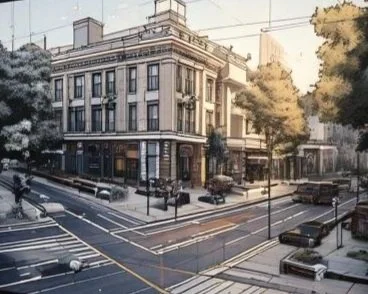Probative Media is Simulation and Training
Creating highly customized graphics tailored to the specific of a case is similar to developing simulation and training software. Often time we reference material such as technical manuals, video, or talk to experts to create graphics that educate an end user. The same processes can be leveraged to deliver useful media that helps convey important information with probative value.
Solutions can range from 2D or 3D images to rendered video and animations. Additionally, we can use interactive media to allow for the exploration of environments, important details, POVs, etc. This all can happen in real-time and allows for a level of storytelling traditionally not possible with still images or video. These dynamic recreations are more like video games and can expand the abilities of conveying a narrative by allowing cameras to be moved in around without the need to render a different video. . It can essentially simulate to an audience what occurred during a timeline.
Details can change at any point and no mater what the media should continue to reflect the intended information. Media services can range from traditional 2D products like diagrams or illustrations to interactive simulations that allow cameras to be moved in around an environments in real-time.
Media SERVICES
Technology in Court
a new perspective
Soon to become more common, a Broward judge uses VR to see the defendant’s perspective in a stand-your-ground case.
Agile Development Process
Agile methodology is well-suited for creating courtroom graphics because it promotes flexibility, collaboration, and iterative improvement. Using scrum, we break the project into smaller tasks and create drafts, gather feedback, and refine graphics step by step. This approach allows for quick adaptations to changing case requirements and ensures that the graphics effectively convey complex information to judges and juries. In order to ensure the graphics are aligned with expectations, each project starts with a planning phase and enters production with the anticipation progress will be previewed along the way. The goal is to allow for work to be inspected while providing enough time to adapt based off feedback discussed during our reviews. This process can be beneficial when time is limited and quick turn-around times are expected. I’m certified in the scrum process and find it’s effective when creating custom products tailored to an unique set of requirements.







